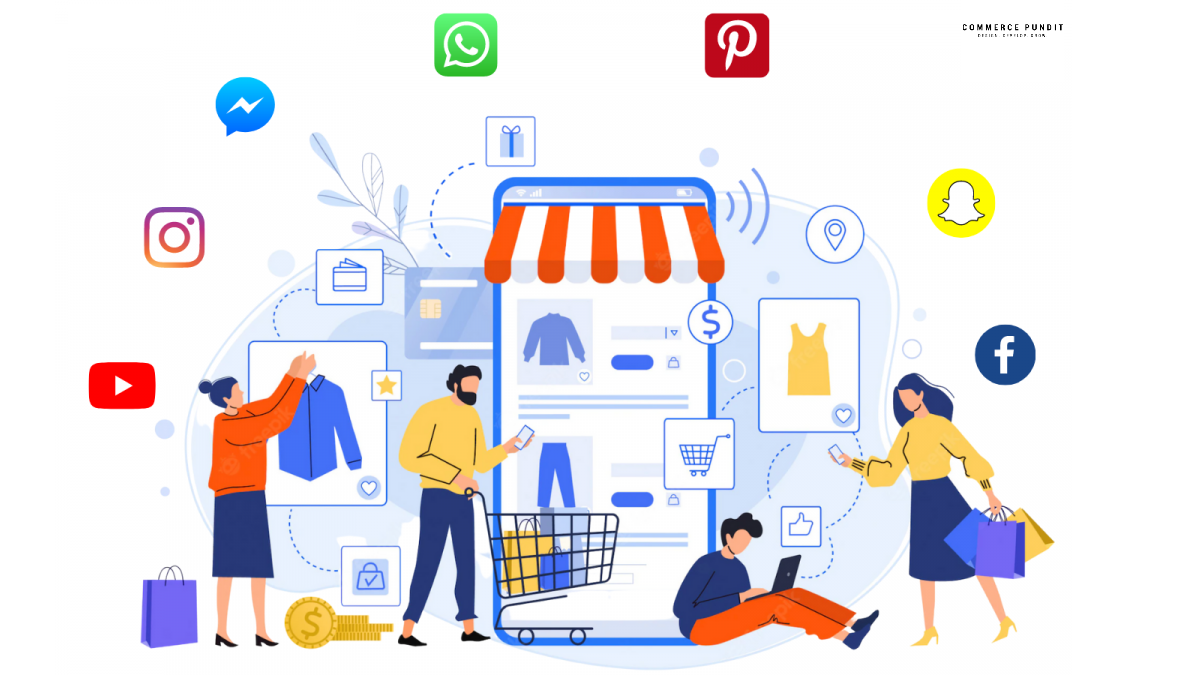Social media is no longer just a place to connect with friends and share photos. Platforms like Instagram and TikTok have transformed into powerful tools for shopping and commerce, giving rise to a phenomenon known as social commerce. With an ever-growing user base, these platforms are reshaping consumer habits, making online shopping more engaging, entertaining, and immediate. But what exactly is fueling this shift, and how are brands capitalizing on it?
Introduction to Social Commerce
Social commerce refers to the use of social media platforms to drive e-commerce transactions. Unlike traditional online shopping, where customers visit a brand’s website or an e-commerce marketplace, social commerce integrates the shopping experience directly into social platforms.
Instagram and TikTok have emerged as frontrunners in this revolution. Their visually-driven, interactive features make discovering and purchasing products seamless for users.
The Evolution of Social Commerce
From Static Ads to Interactive Shopping Experiences
In the early days, social media ads were merely banners redirecting users to external websites. Today, the integration of in-app shopping features, like Instagram Shops and TikTok’s product links, allows users to explore, save, and purchase products without ever leaving the app.
Short-Form Video and Shopping Trends
TikTok has set a new standard with its bite-sized video format, creating a trend of spontaneous, authentic product recommendations. Users often find products through TikTok creators showcasing them in a relatable context, a phenomenon popularly dubbed as “TikTok made me buy it.”
Why Instagram and TikTok Are Leading the Social Commerce Wave
Visual Appeal Meets Convenience
Instagram’s aesthetic-centric platform naturally lends itself to product showcases. Features like “Shop Now” buttons, carousel ads, and shoppable posts have streamlined the buying process.
TikTok, on the other hand, thrives on organic, relatable content that doesn’t feel like traditional advertising. Its algorithm ensures that users see content tailored to their interests, increasing the likelihood of purchases.
Creator-Driven Influence
Influencers and creators hold significant sway over social commerce. They often act as the bridge between brands and consumers, offering authentic reviews and product demonstrations that resonate with their followers.
Key Features Fueling the Social Commerce Boom
Instagram Shops
Instagram’s in-app shopping feature allows brands to set up virtual storefronts. Users can browse products, view prices, and purchase directly within the app.
TikTok Shopping
TikTok has partnered with Shopify to enable seamless product discovery and checkout. Hashtags like #TikTokShopping are filled with user-generated content showcasing products that users love.
Livestream Shopping
Both platforms have embraced livestream shopping, where influencers or brands host live events to showcase and sell products. This adds a layer of urgency and authenticity to the shopping experience.
How Social Commerce Is Changing Consumer Behavior
Impulse Purchases
The immediacy of in-app shopping encourages impulse buys. With just a few clicks, users can own the product they just saw in a video or a post.
Community-Driven Trends
Social commerce thrives on viral trends. Challenges, hashtags, and creator endorsements often lead to specific products gaining massive popularity overnight.
Personalized Shopping Experiences
Algorithms on both platforms curate content and product recommendations, making shopping highly personalized.
Challenges and Opportunities for Brands
Building Authenticity
Consumers today value authenticity. Brands need to collaborate with creators whose values align with theirs to establish trust.
Navigating Algorithms
Understanding how Instagram and TikTok algorithms work is essential for reaching the right audience. Brands must optimize their content to stay visible.
Balancing Entertainment and Commerce
Overly promotional content can deter users. Striking the right balance between entertainment and commerce is key to success.
How to Succeed in Social Commerce
Collaborate with Micro-Influencers
Micro-influencers often have a more engaged audience and can deliver authentic recommendations.
Leverage User-Generated Content
Encourage customers to share their experiences and feature this content on your brand’s page to build trust.
Invest in High-Quality Visuals
Eye-catching photos and videos are crucial for capturing attention in a visually-driven ecosystem.
Adopt a Storytelling Approach
Instead of hard-selling, focus on storytelling that connects with your audience emotionally.
The Future of Social Commerce
With advancements in AR and VR, the future of social commerce looks even more immersive. Imagine trying on clothes virtually through Instagram or experiencing a 3D view of products on TikTok.
Additionally, as platforms continue refining their shopping features, the line between entertainment and commerce will blur further, creating an even more integrated shopping experience.
Conclusion
The rise of social commerce on Instagram and TikTok signifies a monumental shift in the way we shop. By blending entertainment, engagement, and e-commerce, these platforms have created an ecosystem that benefits both brands and consumers. Whether you’re a business looking to expand your reach or a shopper seeking unique finds, the possibilities in this dynamic space are endless.




